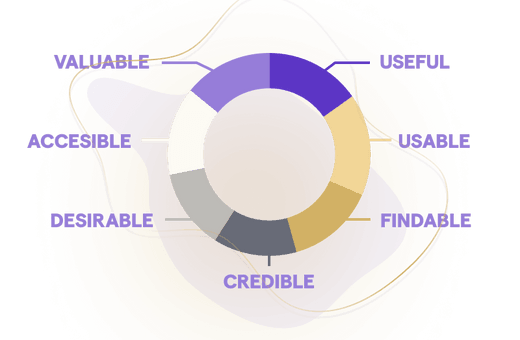The One Thing Standing Between Your App and Success Is Product Adoption Rate
Most financial institutions overlook this essential metric and don't track it, but it could be the one thing standing between your app and success.

Very few products can turn casual users into active ones. Whether the slow user adoption is a result of poor user experience, insufficient onboarding, or lack of perceived value is unclear. In any case, the gap between the average and the best products is getting wider, and the best (90th percentile) products grow 18X faster than average products.
Product Adoption is not just about user satisfaction; it's also closely related to your revenue - so taking an accurate measure of its progress is vital.
In this guide, I'll take a deep dive into calculating your Product Adoption rate and show you how to improve your numbers.
What Is a Product Adoption Rate?
Your Product Adoption rate measures how many new users continue using your product after signing up. If they sign up and log in but then abandon your product, they never adopted it, and they probably won't renew their subscription next time.
What Can You Learn From Your Product Adoption Rate?
The amount of time people keep using your app before giving up primarily depends on whether they understand how and when to use it.
If users adopt your app slowly, measure the percentage of new users (based on the user creation date) who have performed a key action within the first week. It is the moment when your product first makes sense to a user. Some people call it an “aha moment” or “the eureka effect.” It’s when your product finally enables users to benefit from your app; it’s when the first conversion happens, making your business successful.
Product managers and marketers work hard to ensure that customers get as quickly as possible to their 'aha moment,' when they realize the value of the product or service. This typically occurs within the first week of a customer's time with the product, laying the foundation for a lifetime customer. If your users can reach this 'aha moment' more quickly, there will be less churn in the long term.
How Do You Calculate Your Product Adoption Rate?
Calculating your Product Adoption helps measure how new users respond to your app. To calculate your Product Adoption, you'll need to find the number of new active users and new users or sign ups during a given time. You can use weekly or monthly periods, and whatever period you use, you'll need to use the same period later on.
- New Active Users: The number of people who completed a set number of key actions in the given period.
- New Users or Signups: The number of people who signed up or subscribed to the app in a given period.
Now, divide New Users or Signups by New Active Users. Then, multiply this number by 100 to change it into a percentage. BAM, you've got a Product Adoption rate.
How Can You Know if Your Product Adoption Rate Is on Target?
It is simple: you want a high Product Adoption rate. The higher your Product Adoption rate, the higher your customer retention and revenue.
However, financial institution users might require more time than other users to convert from New Users to New Active Users. They might also need more convincing than the average. A 2019 Mixpanel study shows how different groups compare:
- User Growth in Finance: Growth in weekly active users (MoM)
- Median growth rate: 20%
- 90th percentile growth rate: 159%
- Activation in Finance: the percentage of users who completed a crucial activity in their first week.
- Median activation rate: 6%
- 90th Percentile activation rate: 33%
How To Improve Product Adoption?
Although your app may do many amazing things, it usually has a few specific features that stand out from the crowd. These features make the value of your app click for your users. When those users realize this value, it's known as the "aha moment."
Your efforts to drive product adoption should focus on helping users uncover these aha moments—but it's also important to understand that these moments may not occur for everyone. If your app is complex, aha moments could look different for different users.
The first step is to determine how your converted users differ, such as whether they completed all onboarding steps or interacted with a core feature.
Now, without further ado, let's jump into our most proven tactics for improving Product Adoption!
Invest in contextual user onboarding
To make the most of your app's onboarding, you must hold your users' hands and guide them. It's also crucial for a user to understand the app well enough to work with it and see its actual value.
When you see a user going through a rough spot, it's better to teach him how to improve the process than wait for him to contact support. This is often done with tooltips that appear as users traverse your app, giving advice.
To create contextual onboarding, you need to trigger each tip while the user is in a particular stage of the product adoption process. It takes just a few lines of code in your app.
It would help if you also thought about personalized onboarding as an extension of this process. Instead of showing all users the same tips at different stages, you should tailor each tip according to their current position in the product adoption journey or their specific characteristics.
A helpful tool for understanding this is the personas or archetypes of your users based on their goals, demographics, and behaviors. When you create personas and segment your audience into groups based on these behaviors, you can show related tips at various parts of the onboarding process.
Engage with users directly through the app to drive adoption
It's harder to get someone's attention through email or social media. But you see your customers using the app every day. Show them in-app messages! They include notifications, updates, walkthroughs, pop ups, and more. These message pathways support user onboarding, feature adoption, user feedback, and product announcements when used as part of a robust in-app marketing campaign.
Engage with existing users or those who have recently left to bring them back
When users have recently stopped using your app, you have to go out and find them. Email is a great way to reach your users because you can target specific recipients with messages based on their actions in your app.
For example, a user completing a trial of your app can trigger an email sequence filled with relevant information. You could send them a reminder about your app's features, encouraging them to try it again.
When you base your email outreach on the user's experience, you are much less likely to end up in their spam filter, which will make it more likely for them to open the message.
Improve your app using feedback
It may seem like your app has cut through user pain points like a hot knife. But do your users feel the same way?
You can learn a great deal about improving your app from customer feedback. Getting feedback from users can be overwhelming, however. Customers have opinions--some positive, some negative, and some just contradictory. How do you sift through the noise and determine what will improve your app?
The best strategy is not to immediately set yourself up for a deluge of feedback. Instead, be targeted and intentional with your feedback requests.
The best way is not to ask customers for much feedback right off the bat. Instead, be intentional and targeted with your requests. Extending surveys that pop up after specific features have been used is a good, targeted way to get detailed feedback on a particular aspect of your app. By making these requests more focused, you'll gain much more meaningful results than if you had sent out an open survey asking general questions about every part of your app.
Let Us Help You Improve Adoption Rate
Adoption rates should be something you are always working on, not just something you set once and then move on from.
We have helped dozens of companies set and optimize their own adoption rates. Visit Customer Adoption and schedule a strategy call so that you can get the results you want.
Get in touch

